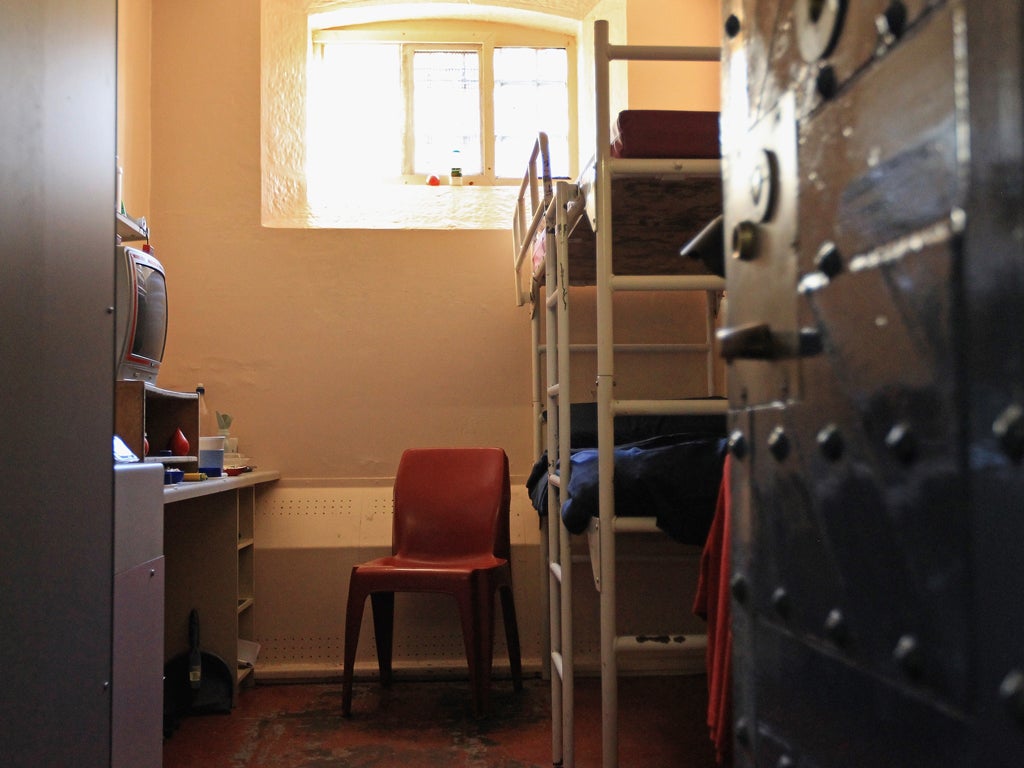Crime is at lowest level in 25 years, but we now have a record number of serious reoffenders and people in prison
Prison should be a place to teach offenders not to revert back to crime and help them integrate back into society, but it's not doing the job.

Her Majesty's Inspectorate of Prisons has just published their annual report into places of detention.
This year’s report is particularly interesting, because we are now seeing unprecedented numbers of prisoners in England and Wales. The prison population, in overview, has been rising steadily since the 1990s. From 1999 to 2009, there was a 29% increase in prisoners, and in December 2011, there was a record high of 88,179 prisoners – just 1,100 places below the useable operational capacity.
This has caused problems where a shockingly large amount of prisons are actually overcrowded. According to statistics from April this year published by the Ministry of Justice (Prison population statistics), 85 prison establishments were overcrowded. Not a big deal, you might think, until you realise that this makes up 62% of the entire prison estate in England and Wales. The Prison Reform Trust reported in August that 59% of prisons in the UK are overcrowded. Prisoners are left to ‘double up’ in accommodation – for example, two prisoners might be staying in a room specifically made for one - and this actively impacts on the effectiveness of rehabilitation, not to mention quality of life.
There are a few largely-accepted reasons that prison should be used in modern society: as punishment; for rehabilitation; as a deterrent; as retribution; to prevent further harm and for the safety of the public. The fact that prisons are overcrowded is worrying, particularly as, anecdotally, it’s believed that this makes rehabilitation programmes less effective, which then leads to reoffending. When you look into crime statistics overall, incidents of reported crime have been going down in the last ten years. So how can crime be going down, and the prison population be going up?
Firstly, the riots in August 2011, though an exceptional circumstance, meant that there was a temporary, short influx of people into the prison system. Secondly, the reoffending rate was fairly stable at around 26% in 2010, yet earlier this year it was reportedly at an all time high, with nearly a third of defendants convicted of serious offences had 15 or more previous convictions or cautions.
Prison is an opportunity and a means to rehabilitate offenders, and if these statistics are to be believed, we as a society are failing. Rehabilitating means supporting them the whole time they are in prison, providing them with access to education that they need, and then helping them find employment when they leave.
There is a clear link between education, illiteracy and innumeracy, and offending. HM Government’s report, “Reducing Re-Offending Through Skills and Employment”, found that 52% of offenders had no qualifications at all, and that 67% were unemployed. While there are already programmes in place to provide prisoners with access to education, like the Prisoners’ Education Trust, there is still obviously a gap where prisoners feel they are not getting what they need. Though this was published in 2005, there is no reason to believe that these figures would have changed dramatically. Another report, by the Ministry of Justice in 2008, found that “the most frequently reported need among the sample [of prisoners] was help in finding employment, cited by nearly half (48%) of prisoners, but improving qualifications (42%) and work-related skills (41%) …were also common needs”.
It has been recommended time and time again that the government invest more in prisons and prison services. In a report published in February 2010, the National Skills Forum recommended that “The Ministry of Justice should further explore the inclusion of education and training programmes within the sentencing process” and “should work towards a culture change within the prison system by making participation in education and training an integral part of the daily prison regime”. Again, this is because it’s strongly believed that “exclusion from the labour market significantly increases the probability of an individual reoffending”.
Nick Hardwick, Chief Inspector of Prisons, wrote in the introduction to the annual report: “If a rehabilitation revolution is to be delivered, with all the economic and social benefits that promises, there is a pretty clear choice for politicians and policy makers – reduce prison populations or increase prison budgets.” I'll go one step further and say it's likely that the key to reducing prison populations is in increasing prison budgets and using it to widen access to education within prisons.

Join our commenting forum
Join thought-provoking conversations, follow other Independent readers and see their replies